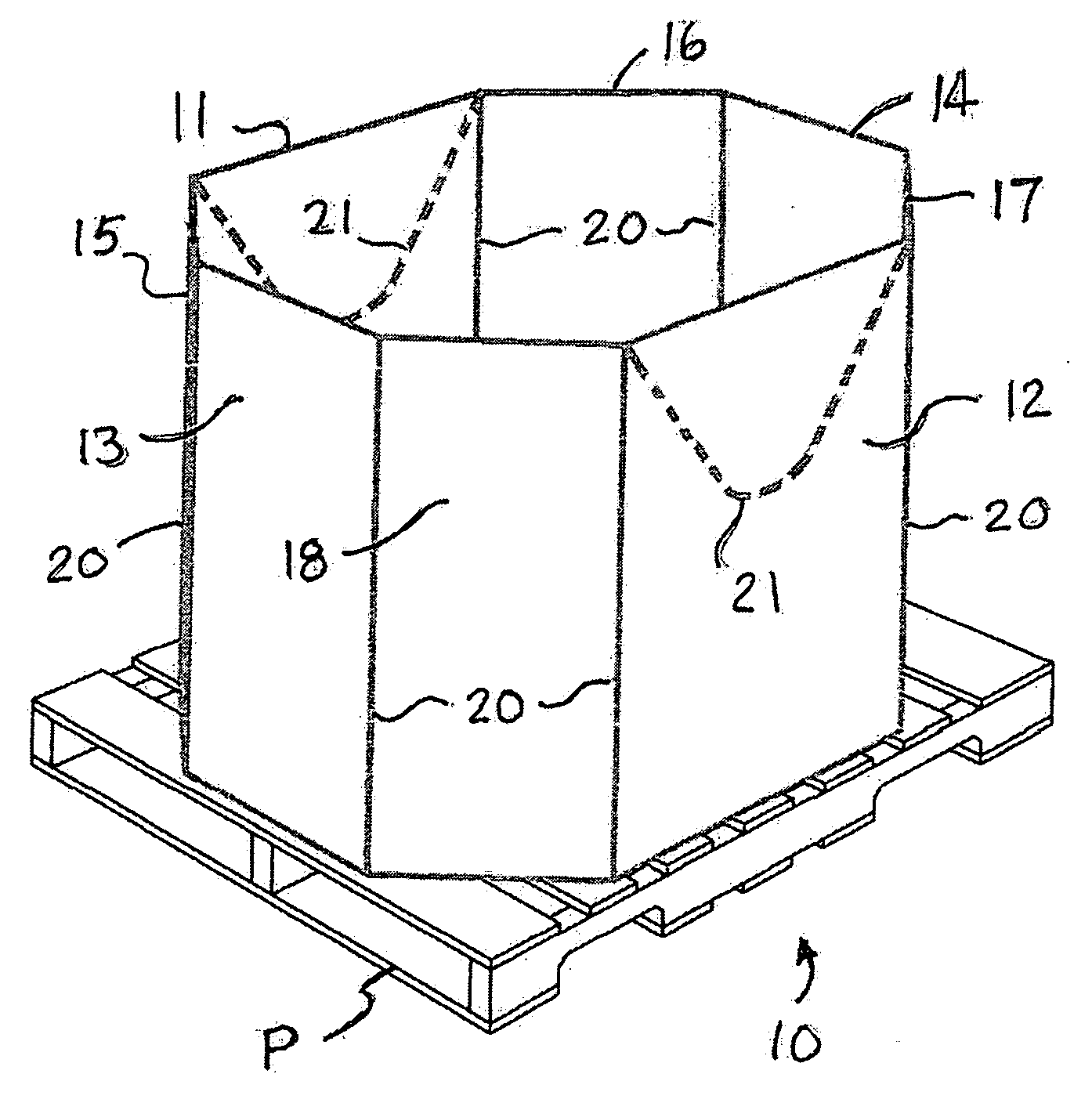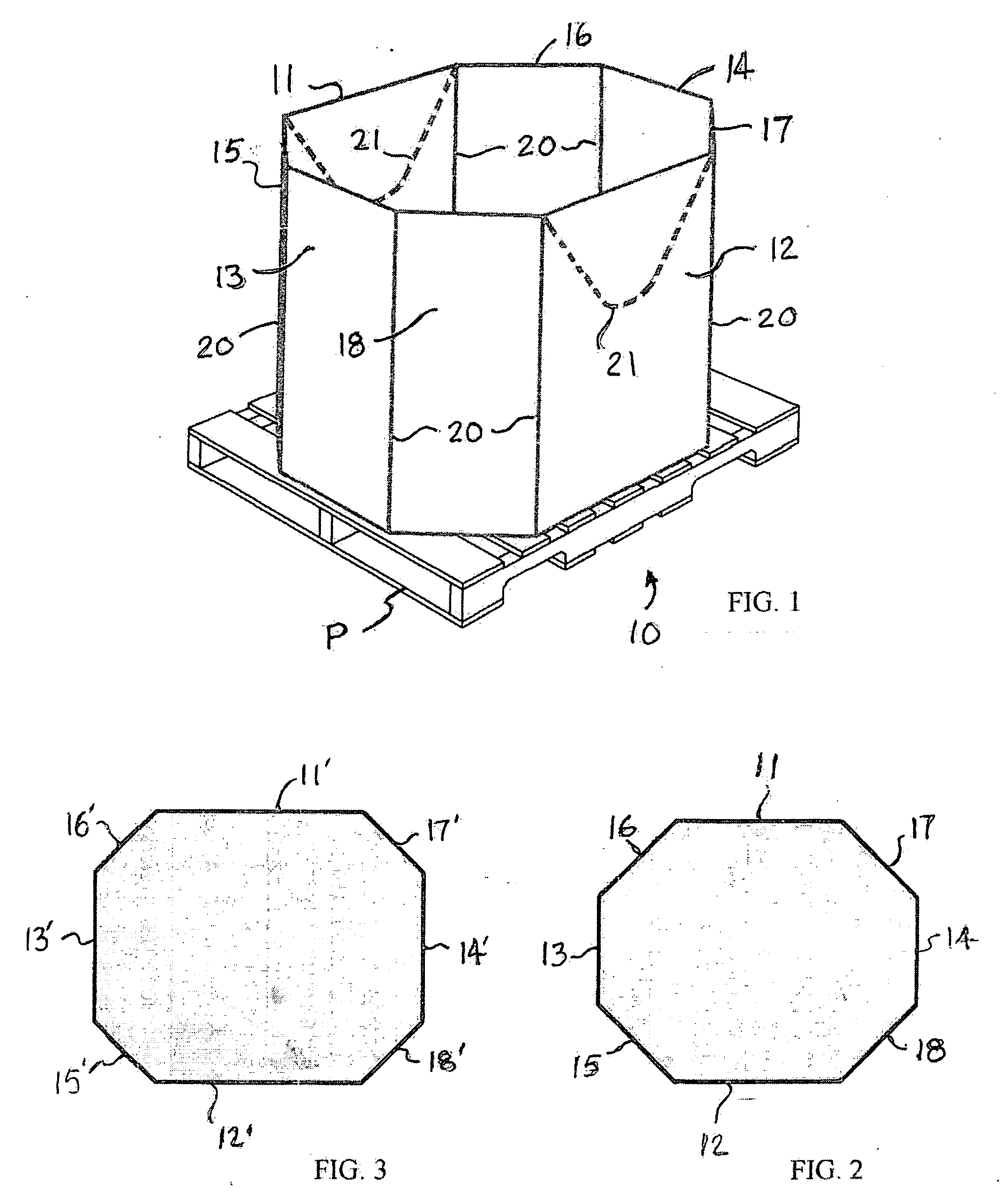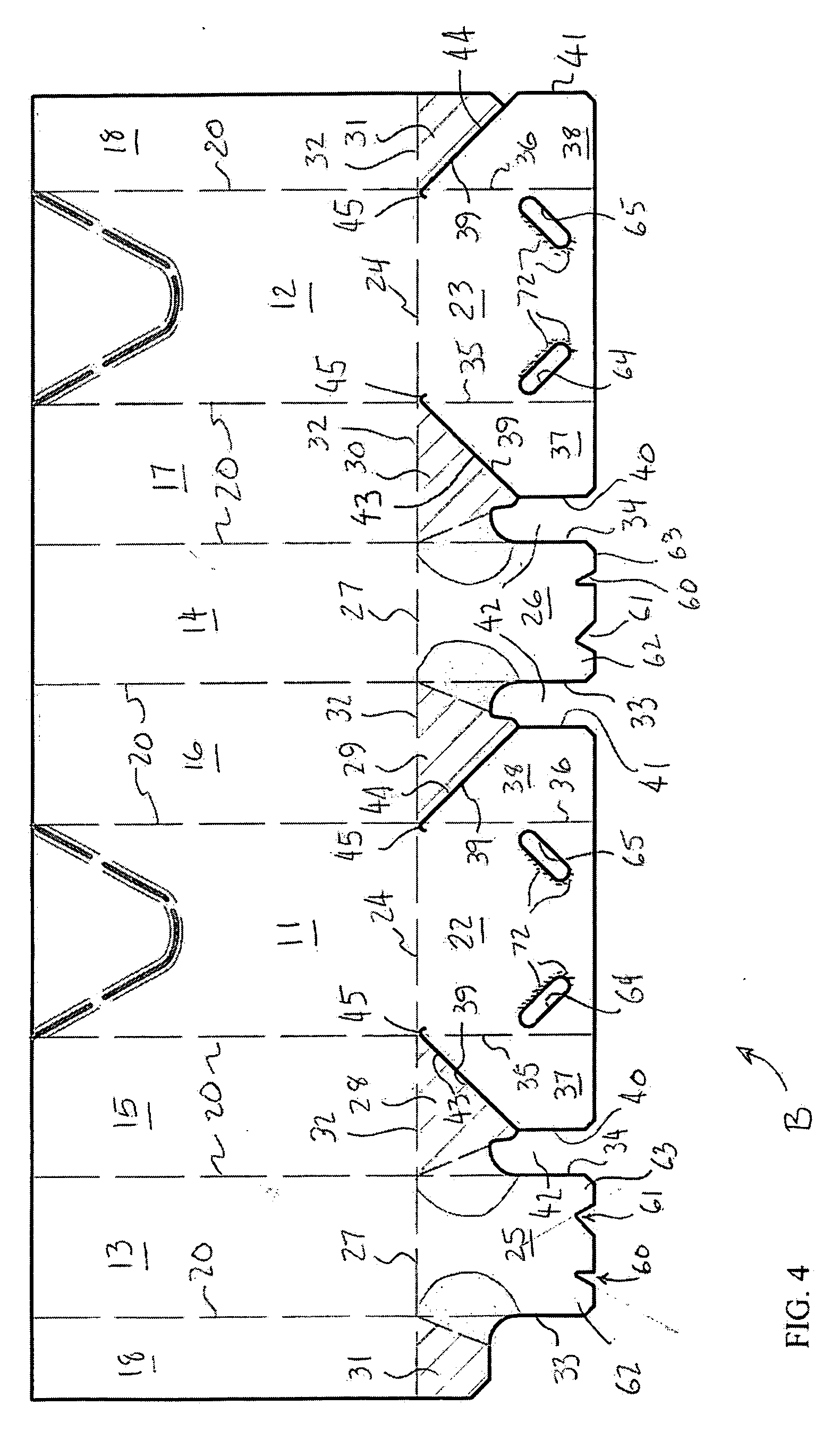Octagonal bulk bin with self-locking webbed bottom flaps
a technology of bottom flap and octagonal bin, which is applied in the field of self-locking bottom flap construction of octagonal bulk bin, can solve the problems of bin failure, sidewall bursting, tearing of vertical fold, etc., and achieves the effects of reducing or eliminating contamination problems, facilitating the setup of octagonal bins, and facilitating application
- Summary
- Abstract
- Description
- Claims
- Application Information
AI Technical Summary
Benefits of technology
Problems solved by technology
Method used
Image
Examples
embodiment 80
[0050]FIGS. 12 and 13 show another embodiment 80, in which the bottom flaps 22′, 23′, 25′, 26′ and 28′-31′ are not as wide as in the previous embodiment and the major bottom flaps 22′ and 23′ are not intended to overlap, but instead butt against one another at their free edges when they are in their inwardly folded horizontal positions. This form of the invention is identical to the previous form, except that both notches 81 and 82 in the free edge of the minor flaps are identical to one another, and except for the difference in width of the bottom flaps. Thus, the edge 83 of both notches extends substantially perpendicular to the free edge of the flap, and the shoulders 84 and 85 are spaced equally from the center of the flap, whereby the shoulders act to exert substantially equal downward pressure on the major flaps when the box is being set up, and provide substantially equal clearance for return of the major flaps to an upper, horizontal position when pressure is released.
[0051]...
embodiment 110
[0053]FIG. 17 shows an embodiment 110 in which the end wall panels 13′ and 14′ have a greater width than the diagonal corner panels 15′-18′. In all other respects, except for differences in the side-to-side dimensions of the bottom flaps resulting from differences in the sidewall, end wall and diagonal corner panel widths, this form of the invention is identical to the form shown in FIG. 4. Also shown in this figure is reinforcing tape 111, which can be applied, or not, to any of the forms of the invention.
[0054] To erect the bin, and with reference to that form shown in FIG. 4, it is placed in an inverted position with its bottom end up as seen in FIGS. 7-10. If desired, to aid in squaring up the bin and to prevent contamination of the top end of the bin, the inverted bin may be placed on a plastic pallet (not shown) as described in U.S. provisional application Ser. No. 60 / 712,236. The major bottom flaps 22 and 23 are first folded inwardly as seen in FIG. 7, followed by inward fold...
PUM
 Login to View More
Login to View More Abstract
Description
Claims
Application Information
 Login to View More
Login to View More - R&D
- Intellectual Property
- Life Sciences
- Materials
- Tech Scout
- Unparalleled Data Quality
- Higher Quality Content
- 60% Fewer Hallucinations
Browse by: Latest US Patents, China's latest patents, Technical Efficacy Thesaurus, Application Domain, Technology Topic, Popular Technical Reports.
© 2025 PatSnap. All rights reserved.Legal|Privacy policy|Modern Slavery Act Transparency Statement|Sitemap|About US| Contact US: help@patsnap.com



